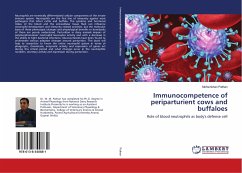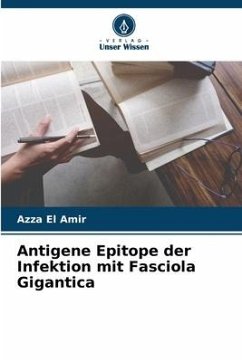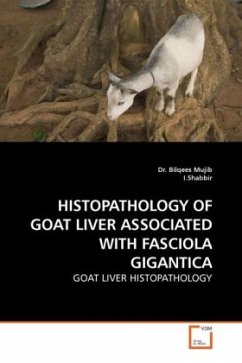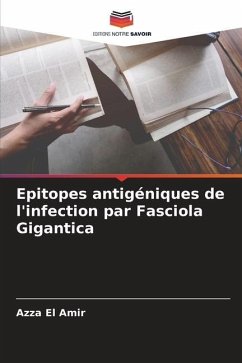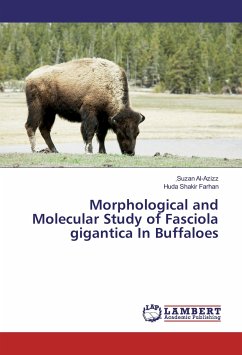
Morphological and Molecular Study of Fasciola gigantica In Buffaloes
Versandkostenfrei!
Versandfertig in 6-10 Tagen
25,99 €
inkl. MwSt.

PAYBACK Punkte
13 °P sammeln!
A total of (1389) samples were examined which divided into (845) Buffaloes and (544) Cows from Basrah slaughter house at the period between September 2014 to March 2015. The number of infected animals divided into (86) Buffaloes and (9) Cows, while, the total account of isolated worms (5265) from liver and gallbladder of both Buffaloes and Cows. The percentage of infection found to (6.39 , 19.12%) in Buffalo for both males and females respectively, while, in cows (0.82 , 3.33%) for males and females respectively. The first part was macroscopic and microscopic examination of Fasciola gigantica ...
A total of (1389) samples were examined which divided into (845) Buffaloes and (544) Cows from Basrah slaughter house at the period between September 2014 to March 2015. The number of infected animals divided into (86) Buffaloes and (9) Cows, while, the total account of isolated worms (5265) from liver and gallbladder of both Buffaloes and Cows. The percentage of infection found to (6.39 , 19.12%) in Buffalo for both males and females respectively, while, in cows (0.82 , 3.33%) for males and females respectively. The first part was macroscopic and microscopic examination of Fasciola gigantica isolated from the livers of Buffaloes and Cows. The second part of this study was conducted on scanning and transmition electron microscope for liver flukes F. gigantica, and the results found a spiny tegument with oral sucker smallest than ventral sucker which was big and muscularis and the genital pore between both suckers. By the other hand the transmition electron microscope showed a high amount on mitochondria, golgi bodies in the tegument of the flukes Fasciola gigantica. The third part of this study was a histological section of the flukes Fasciola gigantica and found that a clear anter



